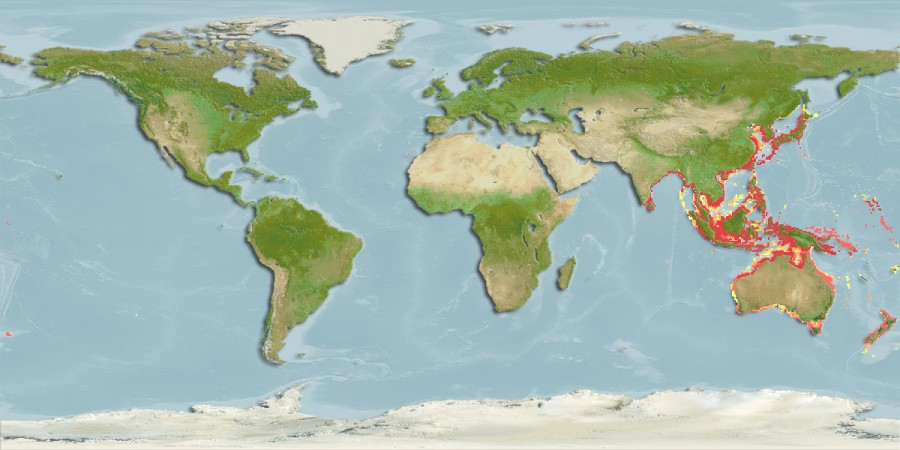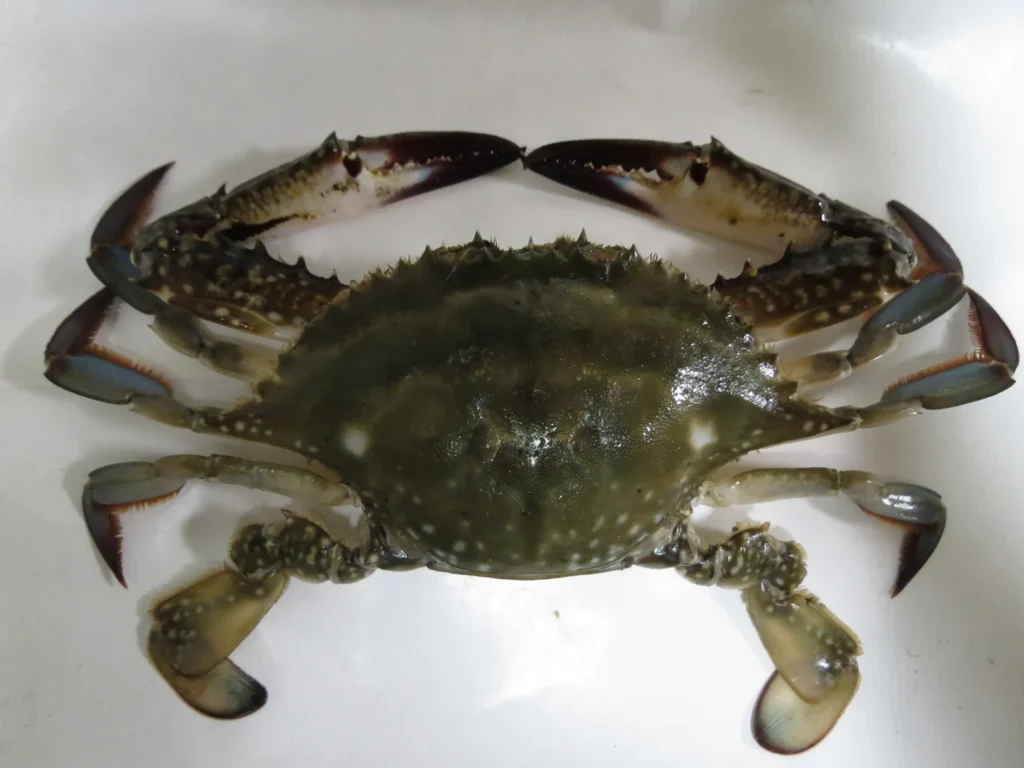Portunus trituberculatus, also known as gazami crab, Japanese blue crab or horse crabis the most widely fished crab species in the world. This species is of great economic importance, especially in China, Japan and Korea, where its meat and caviar are highly valued.
📚 Classification
- The Kingdom: Animalia
- Type: Arthropoda
- Subtype: Crustacea
- Class: Higher crustaceans (Malacostraca)
- Row: Decapoda
- Family: Floating crabs (Portunidae)
- Gender: Portunus
- View: Portunus trituberculatus (Miers, 1876)
- Synonym: Neptunus trituberculatus Miers, 1876
📏 Dimensions and appearance
- Carapace width: up to 15 cm
- Carapace length: up to 7 cm
- Color schemegreenish-brown to gray-blue
- Features:
- Three wide teeth on the front edge of the carapace
- Four teeth on the inner edge of the merus (part of the claw)
- Swimming feet adapted for active swimming

🌍 Range and habitat
- Spread:
- Western Pacific: coasts of China, Japan, Korea and Taiwan
- Indian Ocean: the coasts of Sri Lanka, Southeast Asia, Northern Australia and Papua New Guinea
- Living environment:
- Sandy and muddy bottoms in water depths up to 50 m
- Occurs in coastal waters with a temperate climate
🍽️ Food
- Power supply type: predator and omnivore
- Ration:
- Bivalves (lamellibranchs)
- Benthic crustaceans
- Fish
- Cephalopods
- Behavior: an active predator that hunts on the bottom
🧬 Reproduction and development
- Bisexual
- Reproduction:
- Females lay eggs under the abdomen
- Larvae go through several stages of development in water
- Genome:
- Decoded genome of approximately 1.2 GB, assembled at the chromosome level
- 53 chromosomes have been identified
🧠 Behavior
- Activity: mostly nighttime
- Moving around: capable of fast swimming thanks to specialized swimming legs
- Defensive behaviorcan bury itself in the sand or swim away quickly if threatened
⚠️ Threats and diseases
- Diseases:
- "Toothpaste" and emulsification disease caused by bacteria of the genus Vibriothat lead to significant economic losses in aquaculture
- Viruses:
- Infection with Wenzhou shark flavivirus, which can be transmitted between crabs and sharks, is detected

🧪 Interesting facts
- The most widely caught crab species in the world: over 300,000 tons annually, of which 98% are in China
- High nutritional value: caviar of females is especially appreciated
- Aquaculture: actively grown in China due to its rapid growth and high economic value
- Genetic research: the genome helps to study the evolution and adaptation of crustaceans
🏁 Conclusion
Portunus trituberculatus - is an important species from both an environmental and economic point of view. Its widespread distribution, high nutritional value, and active use in aquaculture make it a key object of research and economic activity. However, intensive farming and associated diseases require close monitoring and the development of effective population management methods.